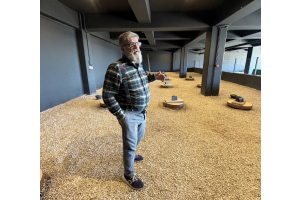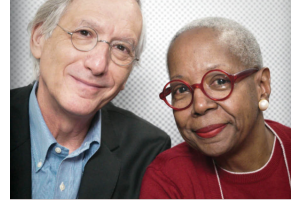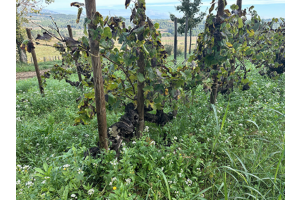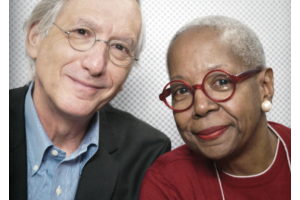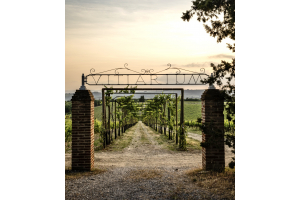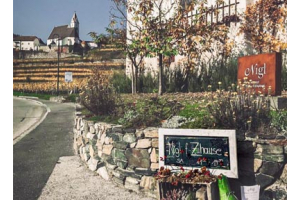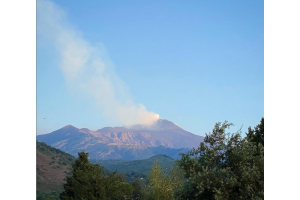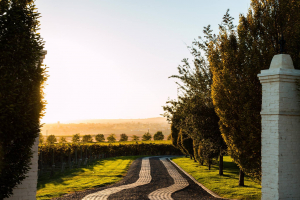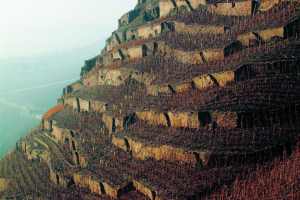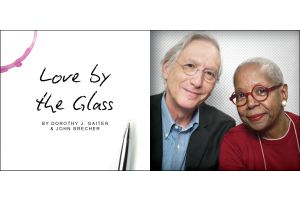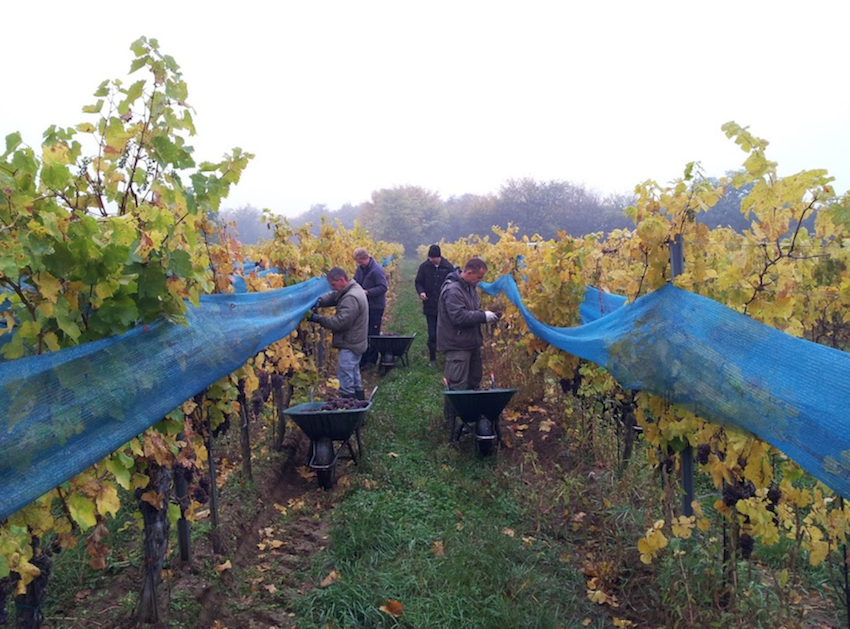
Burgenland is one of Austria's smallest states, about 1,500 square miles (which is approximately the size of Rhode Island). 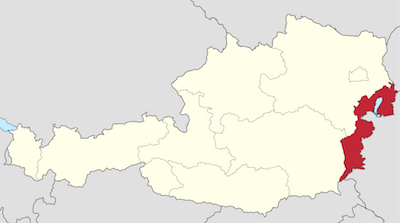 It is in northeastern Austria close to Vienna on the edge of Central Europe’s vast Pannonian plain. Burgenland and its eastern neighbor, Hungary, straddle the Neusiedler See, a very large (122 square miles), shallow lake.
It is in northeastern Austria close to Vienna on the edge of Central Europe’s vast Pannonian plain. Burgenland and its eastern neighbor, Hungary, straddle the Neusiedler See, a very large (122 square miles), shallow lake.
Music lovers may know of Burgenland as the home of Joseph Haydn for over 40 years. It is also Austria’s oldest winemaking region which has long produced excellent wine, particularly red wine. In the mid-1980s, however, its reputation was damaged when certain winemakers were found to add illegal substances to their wines. The scandal spurred a greater focus on quality in an effort to regain consumer confidence. 30+ years later, Burgenland wineries are producing many high quality red and white wines.
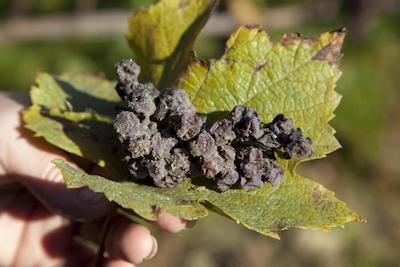 The temperate climate enables Burgenland grapes to ripen fully which result in rich, full flavored wines. Also, the fog and temperatures produced by the Neusiedler See are conducive to the development of “noble rot,” botrytis cinera, the fungus formed on ripe grapes used to make many dessert wines. The morning mists from the lake in autumn result in botrytis which permeates the grapes’ skins and promotes evaporation. The sun and wind then further dry the grapes to raisins. This raisination concentrates the sugar and flavors of the grapes. Only small quantities of Austrian dessert wines are made from these Burgenland botrycized grapes and are highly prized.
The temperate climate enables Burgenland grapes to ripen fully which result in rich, full flavored wines. Also, the fog and temperatures produced by the Neusiedler See are conducive to the development of “noble rot,” botrytis cinera, the fungus formed on ripe grapes used to make many dessert wines. The morning mists from the lake in autumn result in botrytis which permeates the grapes’ skins and promotes evaporation. The sun and wind then further dry the grapes to raisins. This raisination concentrates the sugar and flavors of the grapes. Only small quantities of Austrian dessert wines are made from these Burgenland botrycized grapes and are highly prized.
Weingut Peter Schandl
Since the mid-18th century, the Schandl family has been making wine on 16 hectares in northern Burgenland about 40 minutes southeast of Vienna. The soil is loamy sand with limestone and schist. Schandl employs sustainable methods and uses no insecticides or pesticides.
The winery is based in Rust, a 440-hectare region which is one of the oldest winemaking areas in the world. Rust is on the western shore of the Neusiedler See about five miles from the Hungarian border. Rust’s renown as an excellent wine region is due in large part to its favorable climate - abundant sunlight (300+ days per year) and breezes from the lake and mountains which moderate the temperatures. Rust is also famous as a habitat for storks that make nests in the chimneys of many buildings.
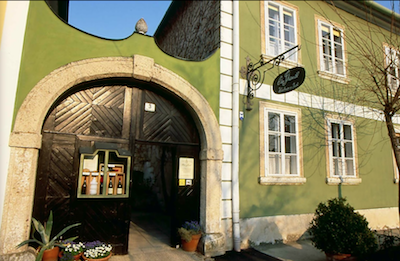 Paul Schandl and his sister run both the winery and adjacent wine bar/restaurant. Prior to taking over as the winemaker, Schandl studied in South Africa, New Zealand, Chile, Australia and California.
Paul Schandl and his sister run both the winery and adjacent wine bar/restaurant. Prior to taking over as the winemaker, Schandl studied in South Africa, New Zealand, Chile, Australia and California.
Schandl makes both lovely reds and whites. Although Burgenland is famous for its red wines, two-thirds of Schandl’s vineyards are planted with white varietals (Furmint, Gelber Muskateller, Neuburger, Pinot Gris, Riesling, Sauvignon Blanc, Weißburgunder (Pinot Blanc) and Welschriesling) and only one-third, with red ones (Blaufränkisch, Pinot Noir, Cabernet Sauvignon, Cabernet Franc and Merlot).
The Wines
Weingut Peter Schandl produces:
Nine white wines – a Chardonnay, Pinot Blanc/Chardonnay blend, a Furmint, a Gelber Muskateller, a Pinot Gris, a Riesling, a Sauvignon Blanc, a Weißburgunder, and a Welschriesling;
Two rosés – one from Blaufränkisch and the other, a blend of Cabernet Sauvignon and Cabernet Franc;
Five red wines – a regular Blaufränkisch and a reserve one, a regular Pinot Noir and a reserve one and one Cabernet blend;
Two bottle-fermented sparkling wines (Sekt) – one from Pinot Noir and one from Gelber Muskateller; and
Seven dessert wines: three late harvest – a Spätlese from Gewürztraminer, an Auslese from Gewürztraminer and Neuberger, and an Auslese from Pinot Gris and 3 botrycized: a Beerenauslese from Pinot Blanc, a Beerenauslese from Gewürztraminer, and the esteemed Ausbruch from Pinot Gris, and an Eiswein (For more information about the range of dessert wines and their production methods, see my article, How Sweet It Is.
Certain of these wines are made rarely, only if perfect conditions permit. And fewer than 10 of the 25 Schandl wines are exported to the US. Annual production is approximately 60,000 bottles. Schandl also produces small quantities of brandy and eau de vie.
The Schandl wines currently available in the States include its Furmint, Weißburgunder, two Sekts, Blaufränkisch and Blaufränkisch Reid Kreften, Pinot Noir and Pinot Noir Ritter and Ruster Ausbruch. We were able to try all but the sparkling wines and below is more about them.
Furmint is a late ripening varietal which produces concentrated white wines with significant tannin and acidity. It is cultivated most extensively in Hungary where it is used in both still and sweet wines. So, it is unsurprising that Furmint would thrive at its neighbor’s vineyards in Burgenland.
2015 was an excellent vintage. This 2015 Furmint is medium- to full-bodied with clean and firm apple and melon notes and lovely minerality and good tannins. It would be delicious with salami and other charcuterie, smoked fish, Asian or other spicy food and cheese or cheese dishes such as quiche, soufflé, or gratin. (2015 Schandl Furmint is $27.99 at Grape Collective).
The Weißburgunder, or Pinot Blanc, has a golden green color and shows floral and herbal notes and apple and tropical fruit flavors. It pairs well with braised veal, beef or ham, poached fish, simply prepared seafood, or baked tomato dishes.
Blaufränkisch, or Lemberger, is also a late ripening grape. It is sometimes referred to as the Pinot Noir of the East. It produces aromatic, spicy wines with juicy black cherry notes and fine-grained tannins with considerable aging potential.
Schandl ages its entry level Blaufränkisch and Ried Kreften Blaufränkisch in French oak. Schandl’s Blaufränkisch wines are elegant – perfumed with cherry, berry and spicy and peppery aromas and a long finish. Blaufränkisch wines are very food friendly. The Schandl ones would particularly complement duck, other game, poultry or meats, and pasta. They also go well with Moroccan or Middle Eastern food.
The Schandl Pinot Noirs have more strawberry and cherry flavors and a velvety and spicy finish.
The Pinot Noir Ritter – On average, Schandl produces this Pinot Noir once each decade. The 2012 was an excellent vintage showing youthful but ripe raspberry and strawberry fruit with earthy, herbal and spicy notes and a rich backbone.
Good pairings with both Pinot Noirs include roast chicken, veal, game, lamb, and braised or stewed beef as well as mushroom dishes.
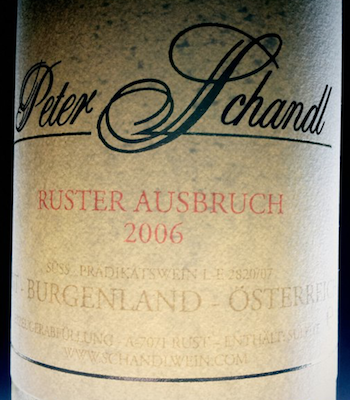 The name Ruster Ausbruch in German means “from Rust” and “to break out.” The latter is a reference to adding juice to fermented wine during the winemaking similar to the Hungarian Tokaji production method which “breaks out” or enhances the sugar. Ausbruch can be made from a single grape or a blend of varietals such as Bouvier, Furmint, Gelber Muskateller, Gewürztraminer, Muskat Sylvaner (Sauvignon Blanc), Riesling, Ruländer or Grauburgunder (Pinot Gris), Weißburgunder (Pinot Blanc), Welschriesling and Zweigelt.
The name Ruster Ausbruch in German means “from Rust” and “to break out.” The latter is a reference to adding juice to fermented wine during the winemaking similar to the Hungarian Tokaji production method which “breaks out” or enhances the sugar. Ausbruch can be made from a single grape or a blend of varietals such as Bouvier, Furmint, Gelber Muskateller, Gewürztraminer, Muskat Sylvaner (Sauvignon Blanc), Riesling, Ruländer or Grauburgunder (Pinot Gris), Weißburgunder (Pinot Blanc), Welschriesling and Zweigelt.
Ausbruch’s sweetness level is typically between that of Beerenauslese and Trockenbeerenauslese in part because it is typically predominately botrycized grapes blended with a bit of fresh, ripe grapes.
Paul Schandl’s aunt, Heidi Schrock, is the leading Ausbruch producer, but Schandl does his aunt proud with the combination of Riesling and either Furmint or Welschriesling in his Ruster Ausbruch. He makes it only three or four times per decade when conditions are perfect; it is magnificent – a balanced, elegant but powerful, full-bodied sweet wine with good acidity and minerality. The Ruster Ausbruch would pair well with blue cheese, foie gras, chocolate, nut or dried fruit desserts or a creamy dessert like a flan or other vanilla custard.
Weingut Peter Schandl is a member of the Cercle Ruster Ausbruch, an organization to bring back Ausbruch and preserve its traditional style, led by his aunt.
